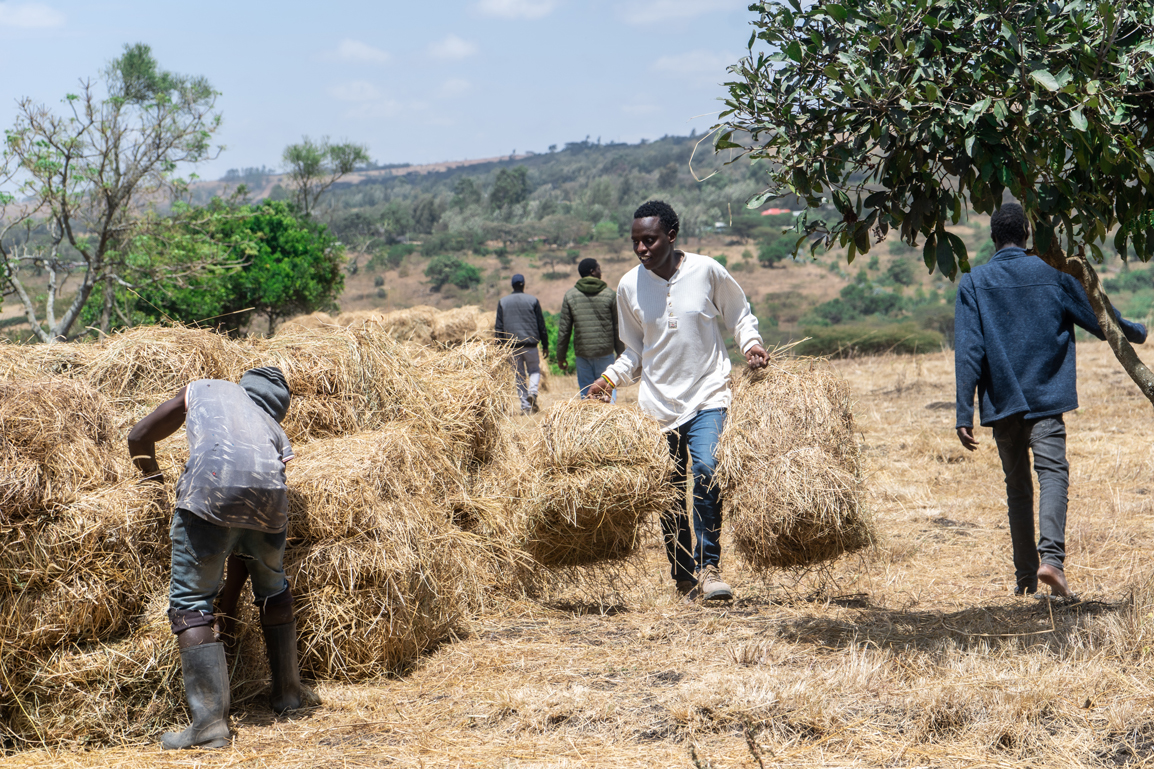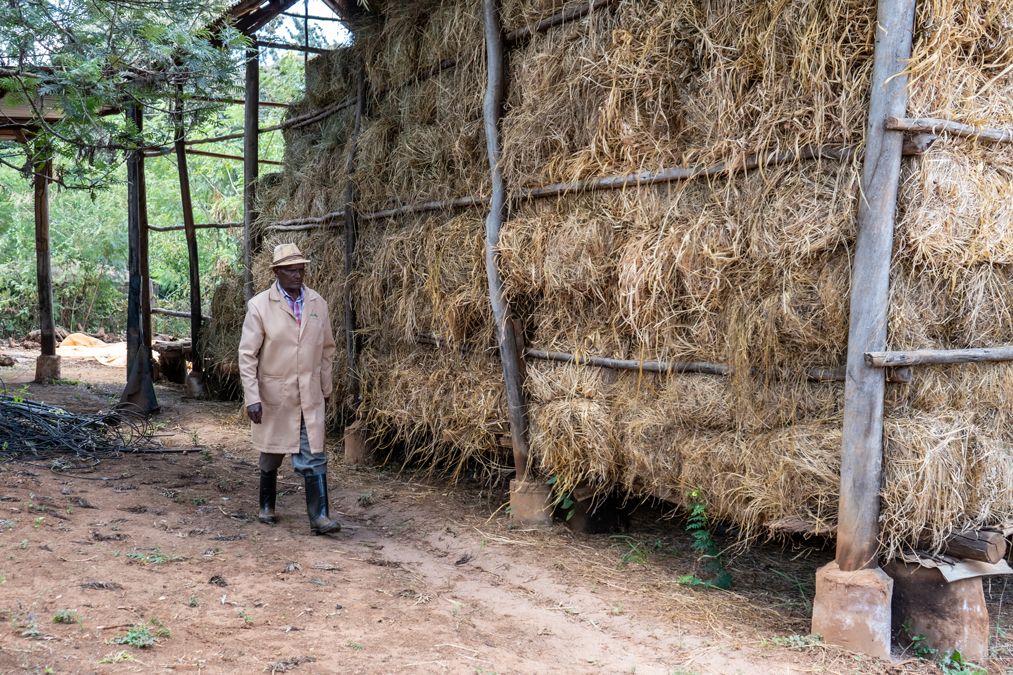
Maasai Indigenous Peoples are pastoralists who traditionally relied on natural pastures, but the prolonged droughts and poor quality, purchased silage have led the pastoralists to adopt other approaches, like growing their own fodder. ©FAO
Once Maasai boys are considered of age, they are taught to take care of the animals, and they move from one location to another in search of good pasture. This has meant that Maasai pastoralists have traditionally relied on natural pastures, considering them a heavenly gift that comes with the rains. However, the prolonged droughts have led to devastating livestock loss and forced them to adopt other approaches. Now with an additional fear of buying poor-quality silage, the pastoralists have been longing to be self-sufficient.
Hence, Maasai Indigenous youth in Kenya are now taking pasture matters into their own hands by growing their own forage for the security of their animals and their livelihoods.
There are approximately 1.5 million Maasai Indigenous Peoples, who practice pastoralism in Kenya and Tanzania. One of them is Jeremiah Muya Sailoji. He is an Indigenous youth belonging to the Maasai people. As he stands amidst the arid landscape of Olteyani village, located in Kajiado County, south of Kenya’s capital, Nairobi, his eyes reflect a lingering sorrow.
“Truckloads of hay and silage were sold to us here in the Kiserian market. Cows that fed on them died days later. We watched our animals die, not from disease but from starvation and poisonous feed. That was a soul-searching moment, and we agreed to embark on producing our own feed on our farms,” he shares.
Along with twelve other Maasai youth, Jeremiah became part of a groundbreaking initiative in their community: the intentional production of pasture. Among these youth was Daniel Memusi Moiko, whose home in Olteyani village has now become a hub of pastoralist innovation.
The group, officially known as the Olteyani Youth Self-Help Group, has embraced the Livestock Feed Commercialization project implemented by the Food and Agriculture Organization of the United Nations (FAO). Launched in partnership with the Mastercard Foundation, the project’s goal is to ensure the availability of quality and affordable animal feed year-round, regardless of seasonal variations.
FAO provided seeds for them to grow local grasses as pasture. In addition to these seeds, FAO provided harvesting and post-harvest equipment and introduced pastoralists to green technologies and practices to meet the growing demands in the face of climate change. In collaboration with the County Government of Kajiado, FAO also provided the group with training on pasture establishment, harvesting and preservation.
“FAO came in with the training and gave us machinery to help us harvest and bale our pastures. They gave us a brush cutter and hay baler, and this helped us with the harvesting,” Jeremiah said.

Each member is required to contribute two hundred bales of hay to the group’s collective reserve, a safeguard against future droughts. While they have the option to sell the hay, they have collectively decided not to for now. “We vowed not to see our cattle die for lack of feed. Our barns are full, but we won’t sell our hay because we are sceptical that despite our good maiden harvest, it may not last us through, should a drought strike again,” Jeremiah explains, showing us his barn within his two-acre farm.
All members have seen significant success. They harvested over a thousand bales of hay from just two acres of land and are considering forming the first Fodder Cooperative Society in the region. They dream big and have taken tangible steps toward their goals, such as setting aside other land for pasture production and planning to source good calves for collective rearing. They aim to expand their pasture production to over 200 acres.
Fodder production has also created job opportunities beyond the group to the broader community. Indigenous youth are involved in various activities including fencing farms, planting seeds, harvesting, baling and operating tractors. These experiences position the Maasai to offer services to other pastoralists and Indigenous Peoples who wish to start fodder production.
FAO’s Livestock Feed Commercialization project, implemented in Kenya and Ethiopia, aims to promote sustainable development in the feed subsector. It focuses on increasing productivity, value addition, market access, utilization and income through the development and promotion of viable business models. The interventions are designed to enhance adaptation and resilience, supported by policies that lower entry barriers and stimulate public and private investments.
In Kajiado County, the project operates in all five sub-counties. It partners with youth groups, women’s groups, Indigenous Peoples, cooperatives and individual entrepreneurs to build their capacity in fodder production and commercialization.
With support from FAO and the Mastercard Foundation, Jeremiah, Daniel and their Maasai peers have become pioneers in pasture production. As they continue to expand their efforts, these youth set a precedent for others to follow. Investing in sustainable fodder production with technical backstopping and support enables these Indigenous Peoples’ communities to thrive, paving the way for a more resilient and food-secure future.
Source: FAO News and Media Office, Rome





